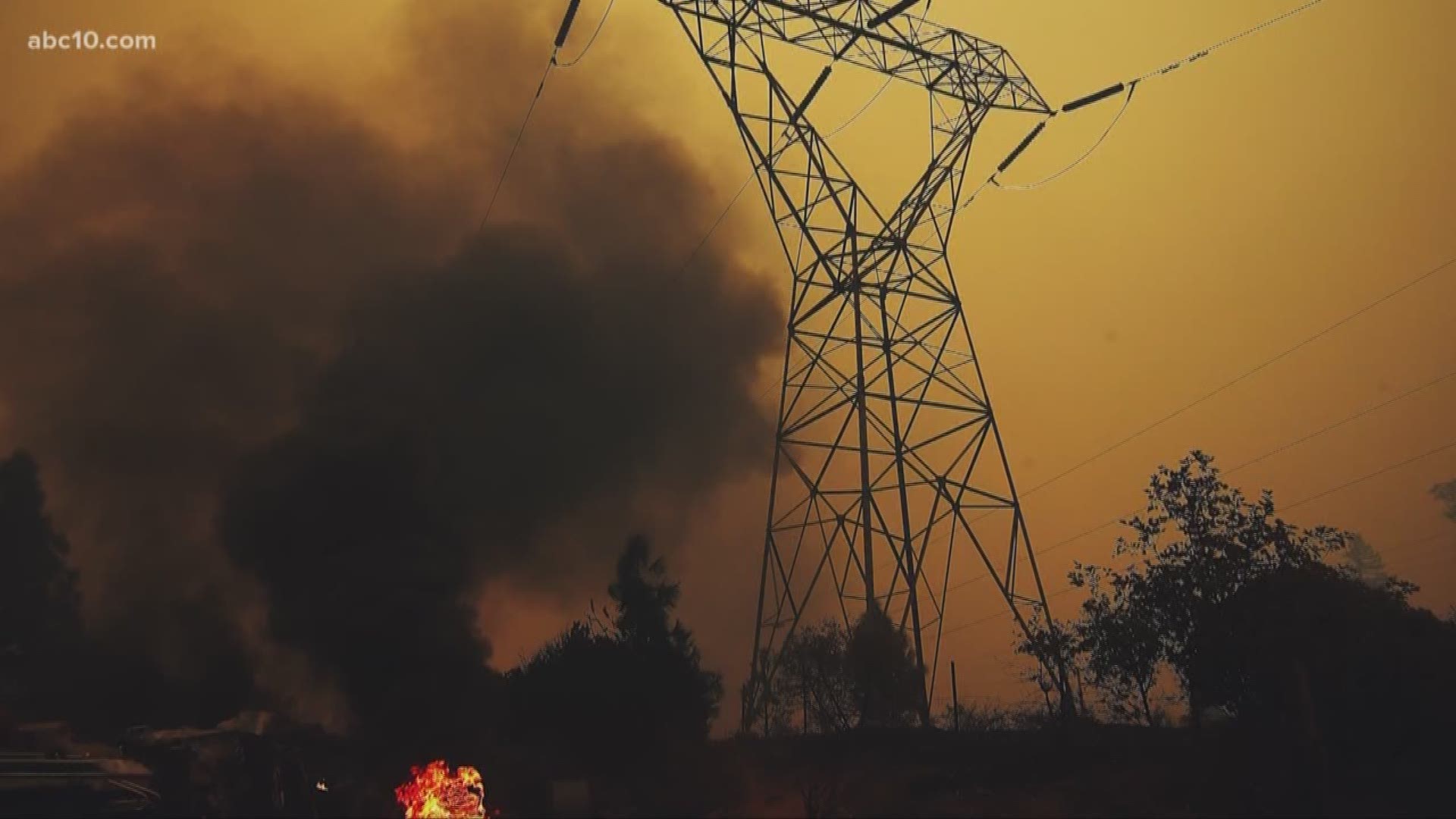Editor's Note: This article is part of the ABC10 Originals project FIRE - POWER - MONEY, a documentary series that breaks down California’s wildfire crisis into its core elements. In three episodes, we expose the reasons wildfires are deadlier than ever, how PG&E influences our politics despite felony convictions and being blamed for starting fires that killed 107 people, and what it’ll cost to pay for the damage and make California safer from fire.
If you are viewing on the ABC10 app, tap here for multimedia.
Pacific Gas & Electric (PG&E) has been in the news over accountability concerns for some California wildfires, specifically in Napa and Sonoma counties.
More attention was drawn to the company when California residents, who lost their homes in the Camp Fire, filed a lawsuit accusing PG&E of failing to maintain its power lines. They said that a high voltage transmission line failed and sparked the fire. CAL FIRE has yet to determine an official cause for the Camp Fire in Butte County.
With all the conversation surrounding the company, here’s what you need to know about PG&E.
PG&E's size is the result of wanting a monopoly for energy providers
“The fact that you’ve got such a large company is sort of a byproduct of what happened in the electric industry generally,” said Steven Weissman, Emeritus Lecturer at UC Berkeley Goldman School of Public Policy.
"The word 'monopoly' has a lot of negative connotations, but when we were determining what we wanted the structure to be for power delivery in this country, you wanted to have monopoly providers,” he added.
According to Weissman, having utilities the size of PG&E was at one time a goal to achieve. With an operation as large as PG&E, people could take advantage of an economy of scale that they couldn’t get with local utility companies. It translated to lower prices and fewer equipment redundancies in local communities.
Smaller utility companies would eventually come together to become larger companies, and, over time, those utilities expanded their service territory.
While there were benefits at the time, Weissman contends that those benefits are limited and, today, some of those advantages have even gone away.
“As time has gone by, the ability to take advantage of larger demand in order to have less expensive power, that’s really tended to go by the wayside,” Weissman added. “In the last 30 or 40 years, it’s been possible to build smaller plants and have them provide power at about the same price as the larger plants.”
In the map below, PG&E's service area is in white:
How bankruptcy and bailouts translate to ratepayers
Senate Bill 901 allows utilities like PG&E to assess how much liability it can afford without being forced into bankruptcy. The bill also allows large utilities to pass costs onto customers to pay back bonds that cover liability costs.
According to Weissman, Chapter 11 bankruptcy allows a company to restructure their liabilities. It's something PG&E did in 2001 when they filed for Chapter 11. It happens when a company finds themselves in a difficult place with their finances. Bankruptcy helps them prioritize their debt.
Weissman says that when an organization completes Chapter 11 bankruptcy, they’re expected to recover and survive.
However, for a ratepayer, when an organization files bankruptcy, it is likely going to lead to higher rates and higher bills. Even if the company doesn’t go into bankruptcy, Weissman added that it would likely be due to the state and regulators compensating PG&E for much of the liability.
“I think, unfortunately, the message for ratepayers is, one way or another, these wildfires will lead to higher rates,” said Weissman said.
Accountability for wildfires
“I don’t think I’ve ever seen a public policy challenge as great as this one in the energy world, with the potential exception of climate change itself,” said Weissman.
When it comes to accountability for wildfires, there are considered to be two big challenges to address: Safety culture at PG&E and ways to reduce wildfire severity when it occurs.
“…we’re going to continue to face catastrophic wildfires, and the only way we can combat that is through a much more comprehensive effort to reduce the kind of fuel availability that allows these fires to continue to spread,” Weissman added.
PG&E actually finds themselves in a unique position. Weissman says that, as monopoly in their service territory, they have to meet the needs of the customers who want service in it. But, ironically, they are also held liable for any damages, even though it’s a service they’re obligated to provide.
“There’s a bit of irony in those dual responsibilities that PG&E has,” he noted. “How can you both insist that they provide service, and then insist that they take on any liabilities as a result of those provided services?”
The challenge includes a matter of expecting a utility to make the right choices if they don’t have to face any liabilities. The utility has to be healthy, but also be accountable in some way. Some have even posited that a broad authority be put forward that develops, implements, and enforces processes that make entities accountable for taking steps to reduce fire risk on their land.
One more before you go... California’s leaders tell us we’ve entered a “new normal” of more intense wildfires. The truth is: Experts think the deadly mega-fires we’ve seen are just a preview of the new normal.

